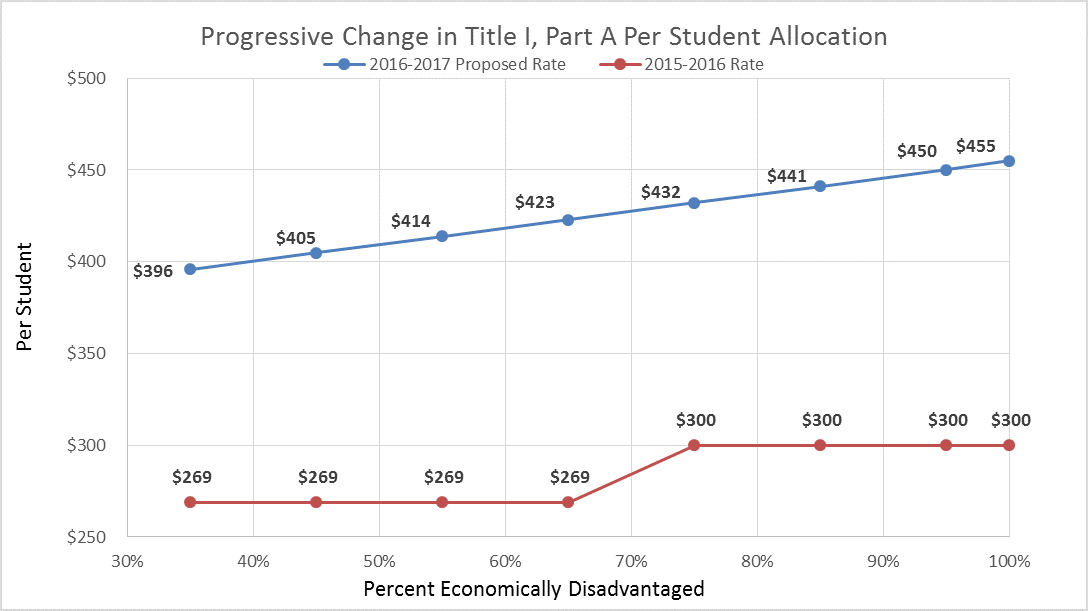HISD schools with the highest concentrations of students living in poverty would receive a larger share of district funding under a proposal brought forward Thursday by Interim Superintendent Ken Huewitt.
The proposal takes into account a growing body of research showing that students from low-income families face more academic challenges when they attend so-called “hyper-poverty” schools than low-income students who attend school with fewer students living in poor households. Most HISD schools that have fallen short of the state’s minimum academic standards have a larger percentage of low-income students than the typical HISD school.
Each year, HISD receives Title I, Part A federal funding meant to provide supplemental resources for schools with high concentration of students from low-income families. Currently, there is little variability among HISD schools in the amount of this money schools receive for each qualifying student. Today, an HISD school with a 35 percent poverty rate gets $269 for every low-income student, while a school with a 100 percent poverty rate gets $300 for each of those students, a difference of $31. Under the proposed funding plan, schools would gradually receive more money per low-income student as the percentage of those students increases. For example, a school with 35 percent low-income students would get $396 for each of those children, while a school with 100 percent low-income students would receive $455 for each child, a $59 difference. The following chart illustrates the proposed change:
Interim Superintendent Huewitt’s 2016-2017 spending proposal also builds on a funding philosophy implemented a year ago prioritizing programs that prevent students from falling behind academically at a young age. Using this approach, research shows, more expensive intervention efforts will be less necessary as students advance in age. With this in mind, Huewitt has proposed using local HISD tax dollars to fully fund day-long prekindergarten for all eligible students.
HISD is among the few school districts in Texas that have managed to offer full-day prekindergarten to eligible students. Most districts offer half-day programs because that is all the state funds. Currently, HISD uses the state funding formula to cover half the cost of prekindergarten, while the remaining half is covered by about $21 million in federal funds earmarked specifically for students who are from low-income families and students who do not speak English as their primary language. This $21 million in federal funding would be used to pay for the interim superintendent’s proposal for additional resources in hyper-poverty schools.
This latest funding proposal, presented to the Board of Education for discussion on Thursday, was developed based on feedback from board members on a prior school funding proposal. That proposal, which is now withdrawn, would have reduced the amount of extra funding schools get for each child in the district’s gifted and talented program while increasing funding for students considered to be at risk.
The interim superintendent’s proposals come at a time when HISD is attempting to address a $107 million shortfall caused by the state’s school finance system, which now considers HISD to be a wealthy school district despite a student poverty rate of 75.5 percent. Huewitt’s proposal, while not finalized, was created with the aim of having the least negative impact on classrooms.
So far, proposed reductions in central office and districtwide programs total $77.6 million. Meanwhile, the amount of money schools receive per student would be reduced by $179, which represents a $40 million cut.
Details of the proposed $77.6 million in central office and districtwide program cuts include:
- A proposed $50 million reduction in central office/non-campus payroll
- A proposed $11.3 million reduction in contracted services
- A proposed $16.3 million reduction in supplies, materials and technology equipment, and other operating expenses
Some specific cuts that helped eliminate $77.6 million in central office/districtwide spending include:
- The $19 million Apollo school turnaround program that pays for extended school days and tutors at struggling schools
- The $10 million ASPIRE program that pays financial awards to teachers, campus administrators, and others for their students’ academic progress
Even with these proposals, HISD still must address a remaining $28.3 million gap by the time a final budget proposal is brought forward for adoption in June. More details on the 2016-2017 budget can be found here.
